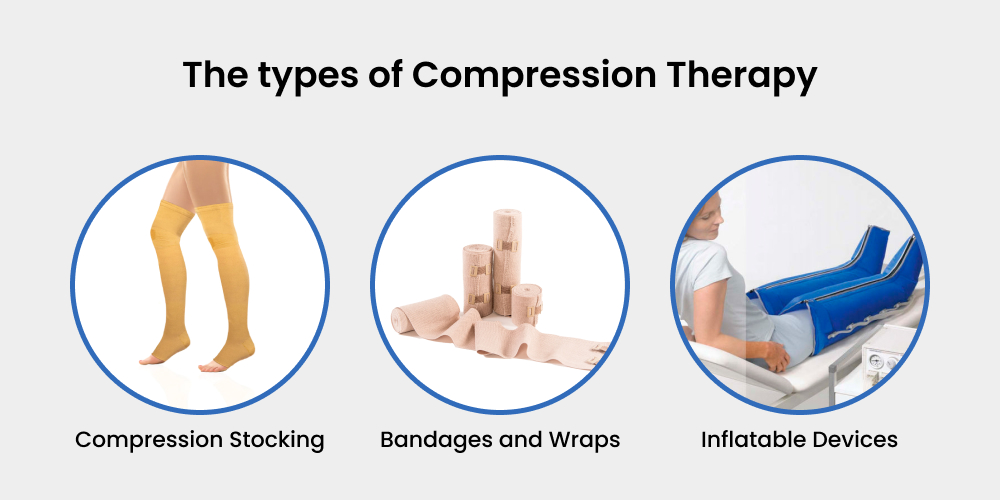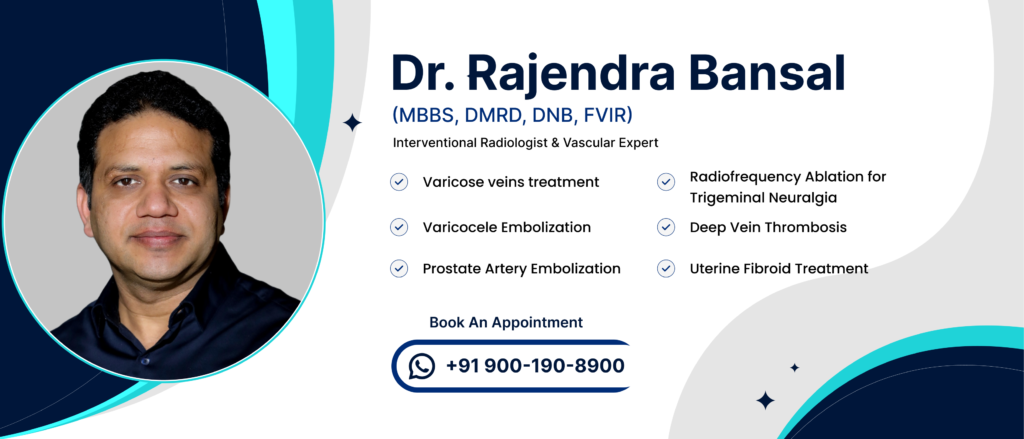
The Role of Compression Therapy in Varicose Vein Management: What You Need to Know
Veins that bulge and twist, often seen in the legs, are called varicose veins, and they may be ugly and painful. Though there are other options for treatment, compression therapy is unique in that it is a non-invasive and successful method for early stage varicose veins. It eliminates the pain and swelling caused by the varicose veins condition and chronic venous insufficiency. There are multiple reasons why this therapy has emerged as the best approach. To know more about this therapy, let’s discuss it in detail.
What is Compression Therapy?
This therapy includes wearing elastic shocks and other wraps on the legs to provide compression on the legs. This technique prevents blood pooling and improves blood circulation in effective areas.
The types of Compression Therapy

Compression Stocking: Knee-high stockings are the most popular kind of compression clothing. You may need to wear longer stockings or tights that reach your waist if the swelling is above your knee.
Bandages and Wraps: Those who struggle to put on socks may find it simpler to apply Velcro wraps and elastic bandages. Usually, bandages are put in many layers.
Inflatable Devices: These clothes cover the legs completely and inflate to provide pressure. This device is majorly used by the athletes.
Every compression sock with special compression grade that defines how much pressure it puts. The range of pressure relies on the lower than 20 mmHg to more than 40 mmHg.
To choose the range, you must consult with your doctor or healthcare provider.
Condition When Compression Therapy Helpful
Compression treatment is advised by medical professionals for conditions brought on by insufficient blood return. Among them are:
Chronic venous insufficiency
A usual condition that affects the veins in the legs. This occurs due to weak veins and valves not working effectively.
This illness causes symptoms due to a slowdown in blood flow from the legs to the heart and blood stasis.
Deep vein thrombosis may be the cause of chronic venous insufficiency (DVT). Ageing and longer periods of sitting or standing might also cause it. By compressing your leg muscles, compression treatment helps lessen chronic venous insufficiency. This aids in returning blood to the heart by defying gravity.
Varicose Veins
The varicose veins are caused by chronic venous insufficiency. Under your skin, varicose veins occur which resemble looping ropes. Compression treatment is a useful tool for reducing varicose vein discomfort and oedema.
Deep Vein Thrombosis (DVT)
This is a blood clot that often forms in a leg or other deep vein in the body. The clot may cause blood and oedema to accumulate behind it because it restricts blood flow.
Patients who are at risk of deep vein thrombosis may be advised to undergo compression treatment by medical professionals. A few of the risk factors are:
- Carrying extreme weight
- Physical inactivity
- Pregnancy
If you are suffering from deep vein thrombosis and taking anticoagulants/blood thinner then you can consider compression therapy. However, it is highly advisable to consider your healthcare advisor before taking compression therapy.

Swelling
Our body tends to get blood fluid in the lower legs owing to gravity but our inner organs can prevent it in various ways. But when the body fails to do so, fluid collects at the lower part and thus swelling occurs. With compression therapy, you can eliminate the fluids.
Why To Pick Compression Therapy
The major benefit of compression therapy is to improve the return of blood from the legs towards the heart. Apart from this, it also offers a number of other benefits such as:
- Help in healing the wounds or ulcers caused by the blood pooling
- Manage the condition like chronic venous insufficiency
- Provide relief in symptoms of deep vein thrombosis.
Some Risks Associated with Compression Therapy
- Skin irritation
- Pain or pressure in the area
- Risk of developing a fungal infection
- Arterial insufficiency
How to Avoid These Risks
- Get professional help and guidance
- Frequently check on wrinkles
- Refrain from folding the top of the stocking
- Ensure your skin is dry
- Wear shoes or footwear to protect the stocking
- Replace the stocking in case of stretches or worn out
Conclusion
No wonder, compression therapy is an effective treatment for enhancing blood flow and supply to the lower legs. This could eliminate issues linked with lower blood circulation like swelling and pain. However, consultation is a must if you are having immense pain and discomfort. Also, consultants or healthcare advisors play a significant role in determining the treatment option. To get the best advice and treatment, head to Dr Rajendra Bansal who is an expert interventional radiologist in Rajasthan. You can get personal advice and supervision by contacting him and his team at his clinic Flowcare located at Tonk Road.







